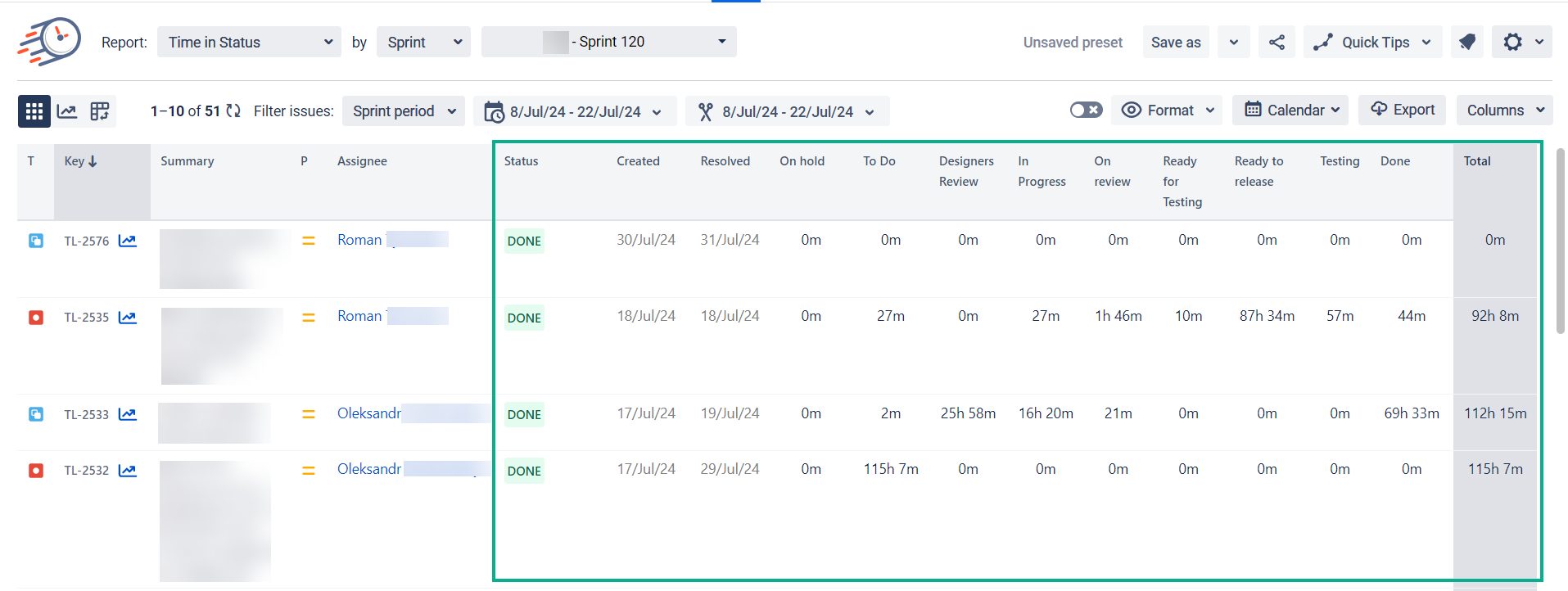Identifying Bottlenecks in Your Jira Workflow
📝 Context: Jira is a powerful project management tool for monitoring issues and managing projects. To continuously enhance organizational processes, it's crucial to identify everyday bottlenecks and investigate possibilities for development. Monitoring time spent in different statuses (Jira statuses) effectively analyzes delays in scrum teams' workflows. |
|---|
🤔 User Problem: Teams struggle to identify and address wasteful delays in their workflows. They need a way to monitor time spent in different statuses, analyze delays, and take corrective actions to improve efficiency. |
|---|
Analyze unproductive delays in workflow
In your team, these statuses function as a complicated workflow process, including different support levels (L1, L2), several developers, QA engineers, and PMs, for example.

When working on projects that have yet to be completed, tasks with inactive statuses become increasingly prevalent; these tasks include Jira statuses as On hold, waiting for developer or support, etc. Managers are interested in finding why and in what statuses unnecessary delays occur in this scenario.
We all know that if Jira waiting time is reduced, jobs are completed considerably more quickly. Inactive statuses that cause delays should be investigated.
If you see inactive statuses causing unproductive delays, you can assume the following:
Unassigned task priorities – employees have no idea which task is essential; thus, they complete them in order of importance. It might result in the VIP customer's assignment being "pushed to the side," delayed, or even lost. Our attention and efficiency improve when we work on priorities.
Our attention and efficiency improve when we work on priorities.
Due to a lack of communication across departments, colleagues from one department should wait too long for the related tasks from another.
Employees are not concentrated or motivated enough, so their tasks stay inactive for too long.
Identifying and fixing delays will improve task performance and team efficiency. Workflow bottlenecks might vary for different reasons. The ways to resolve emergent difficulties can be completely unexpected, but you can predict them using tools for monitoring.
📈 Outcomes:
|
|---|
If you need help or want to ask questions, please contact SaaSJet Support or email us at support@saasjet.atlassian.net
Haven't used this add-on yet? Try it now!